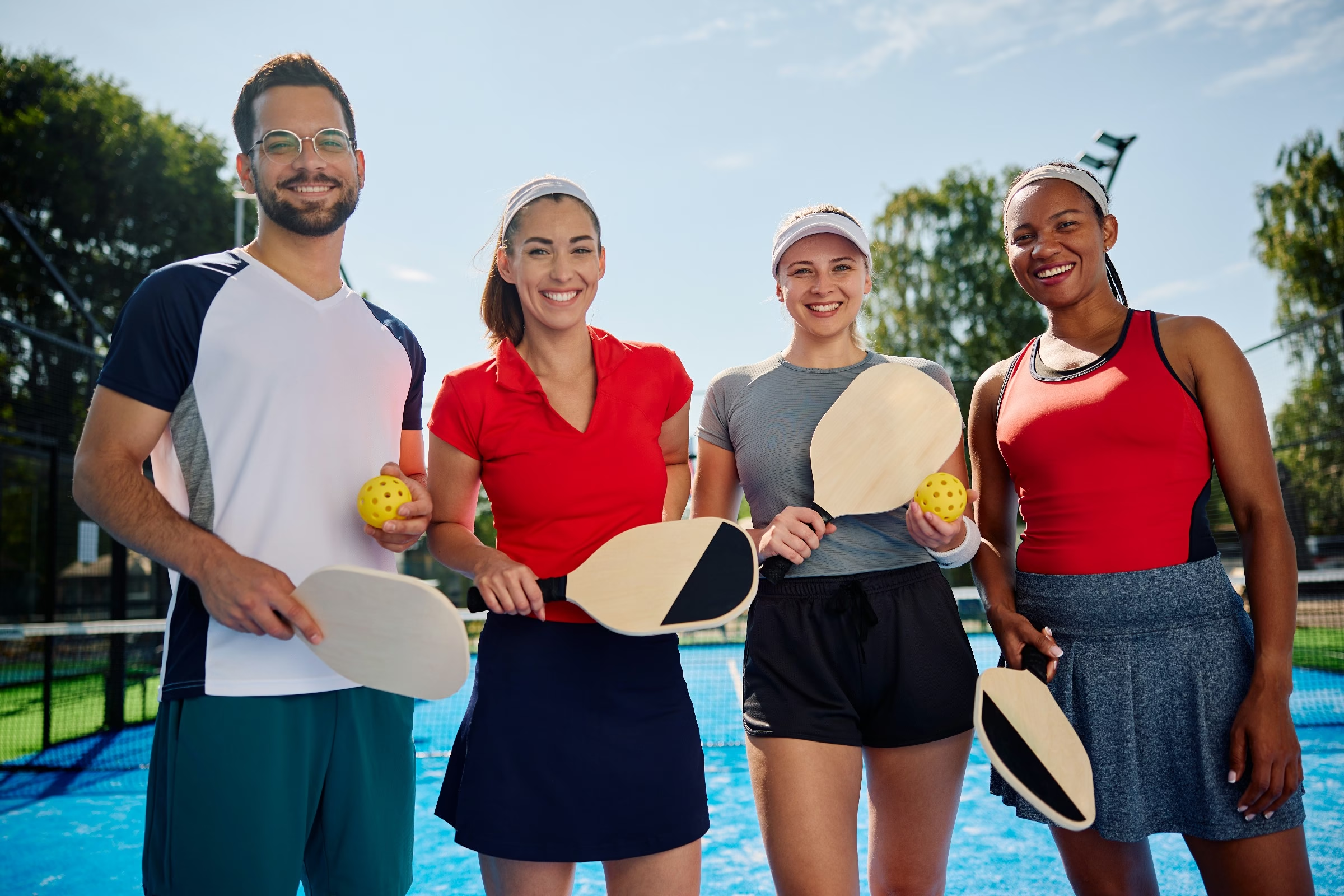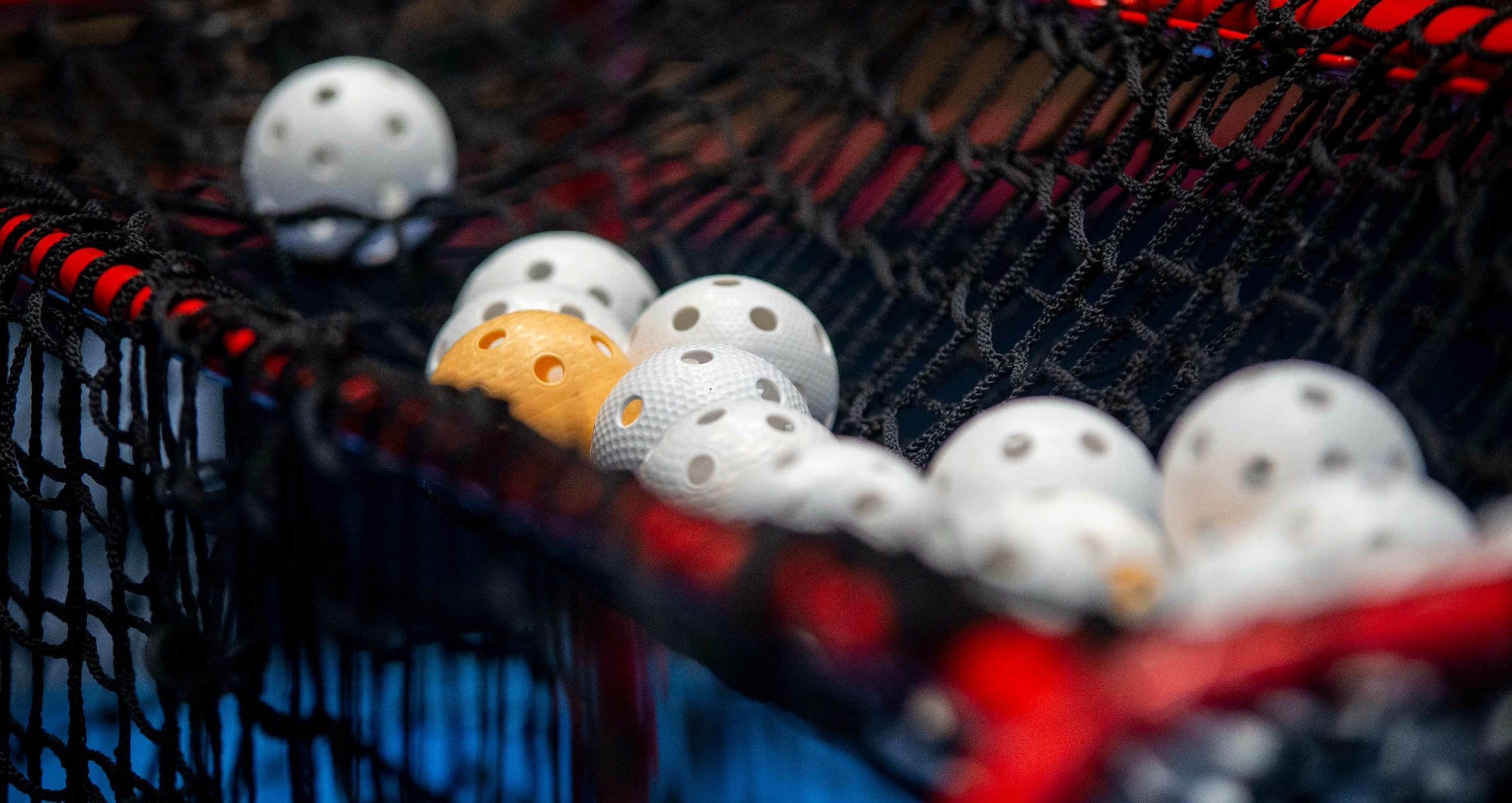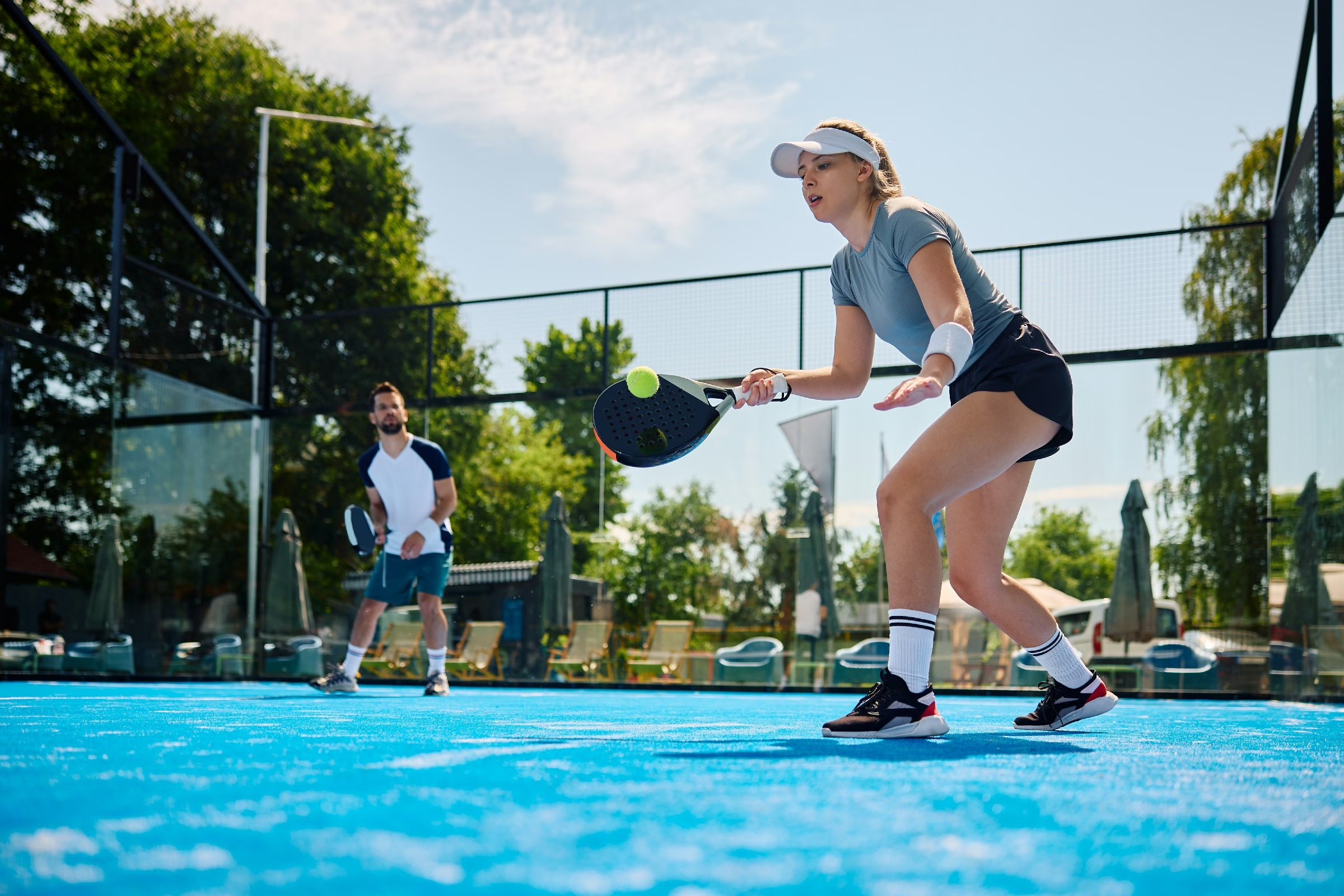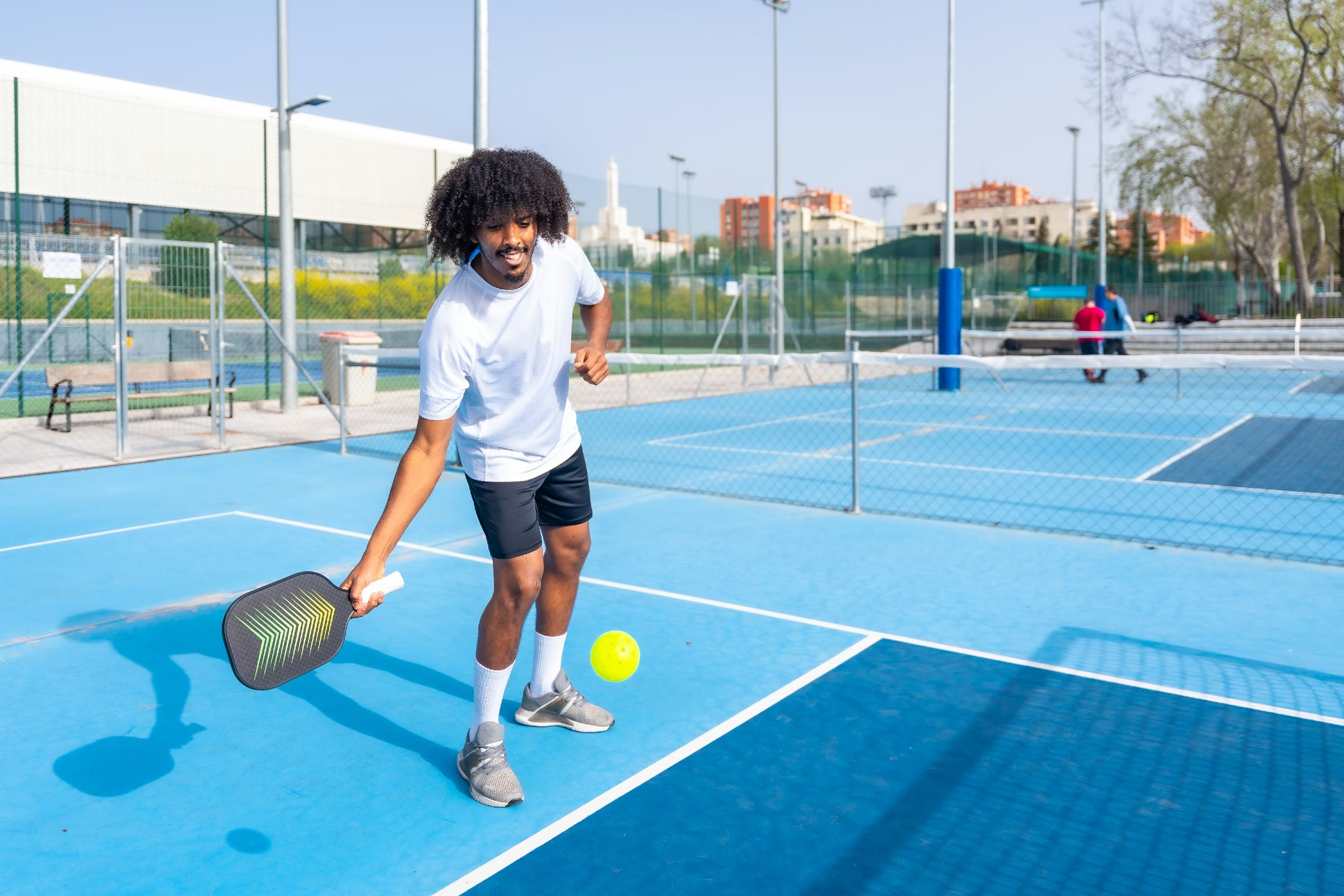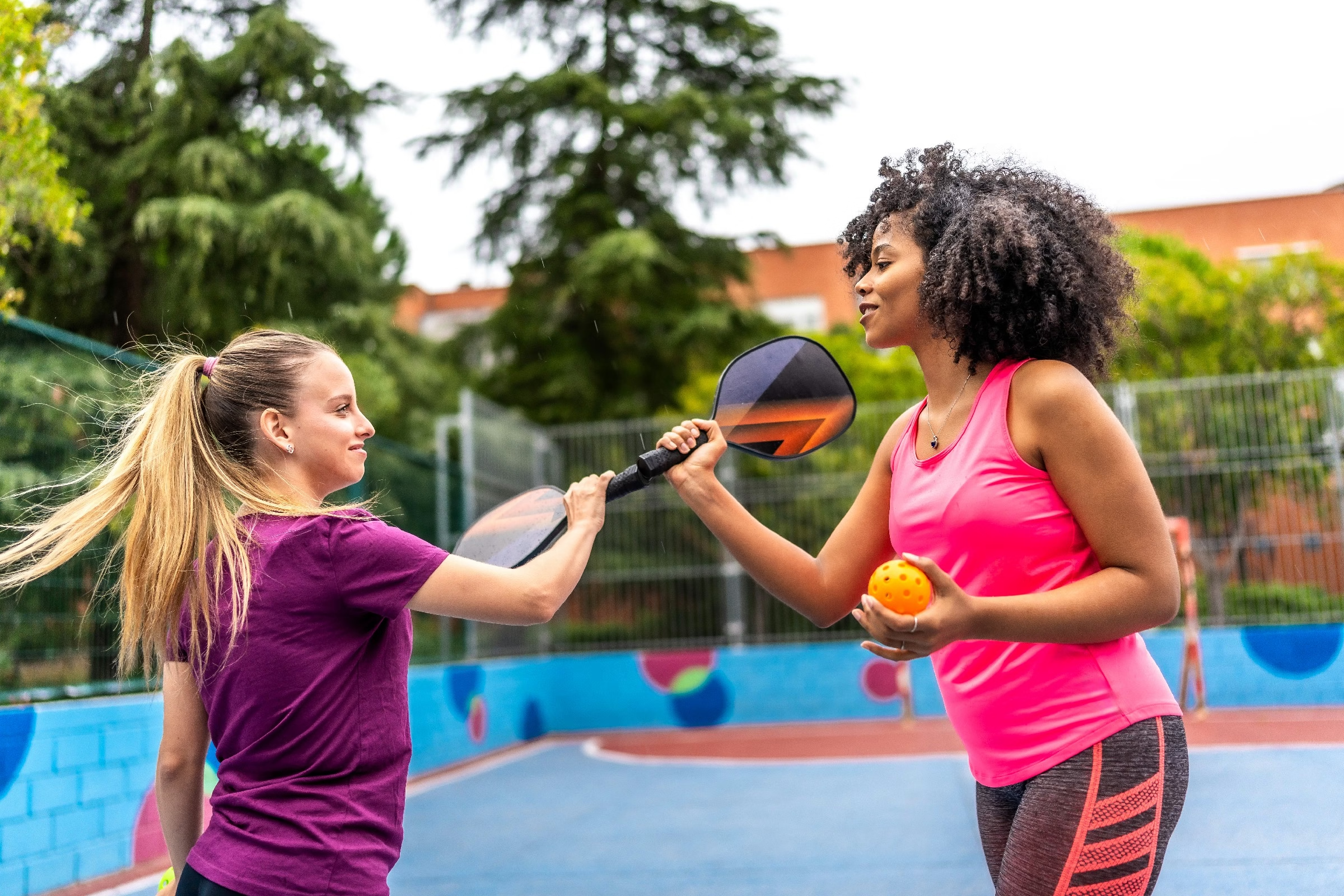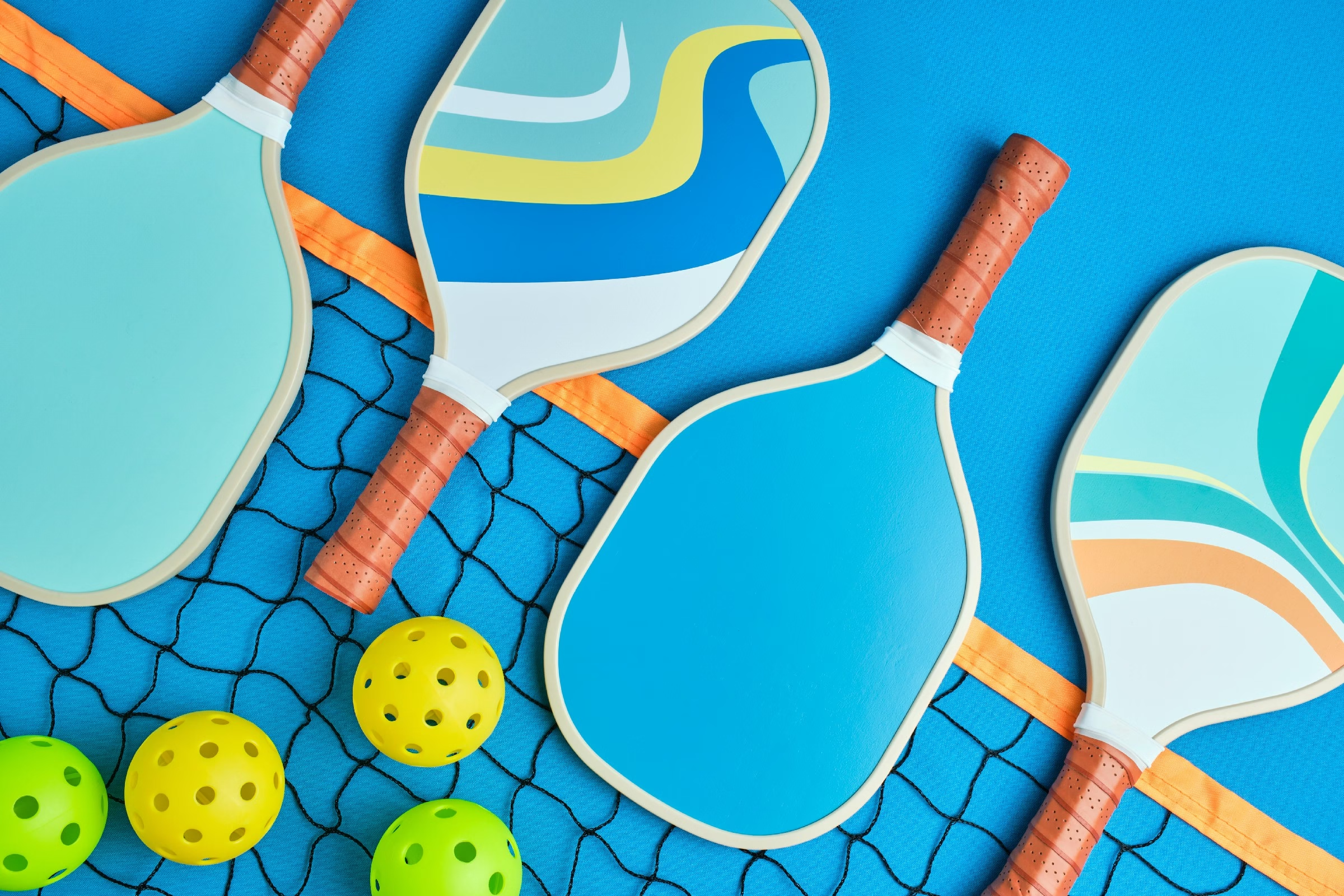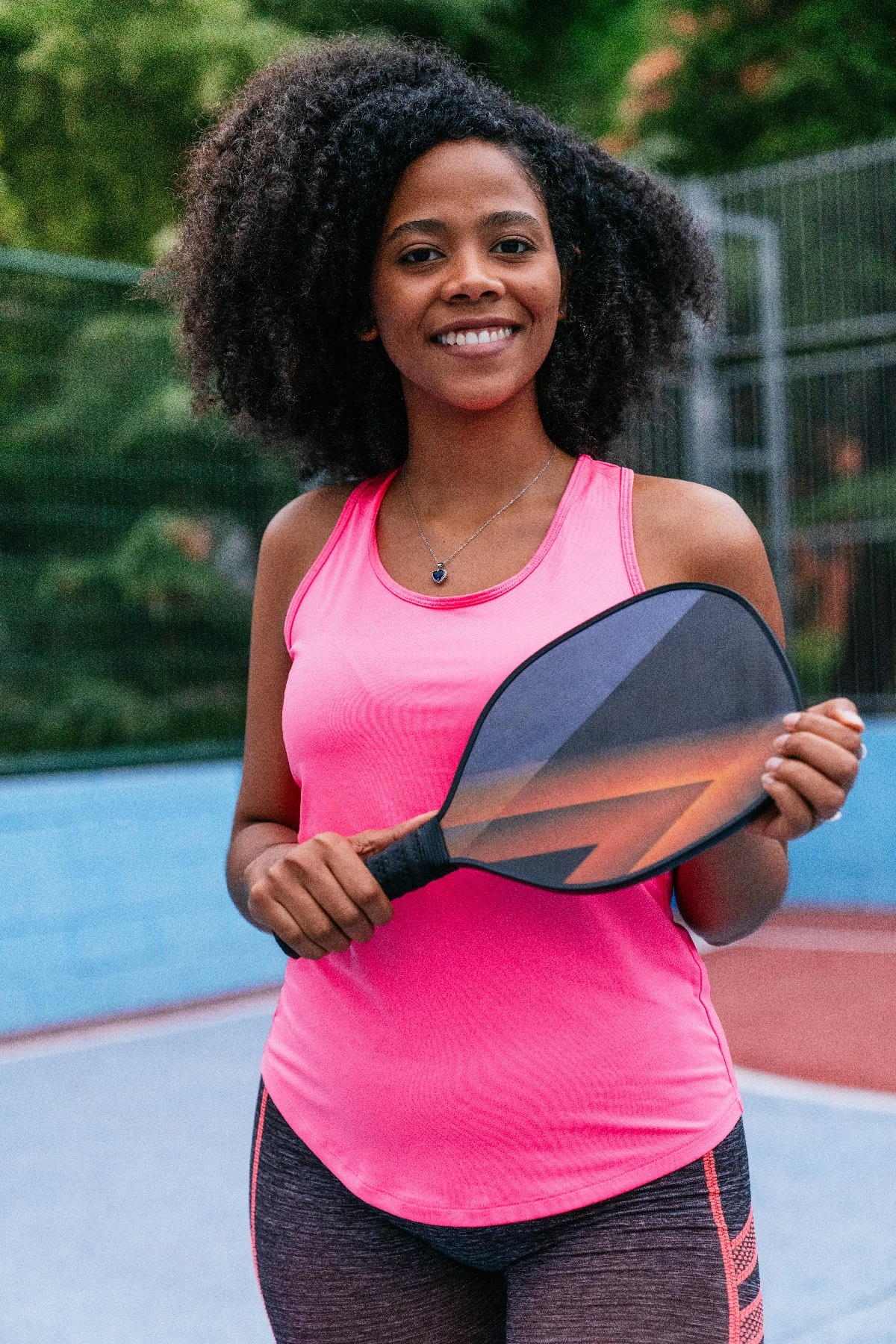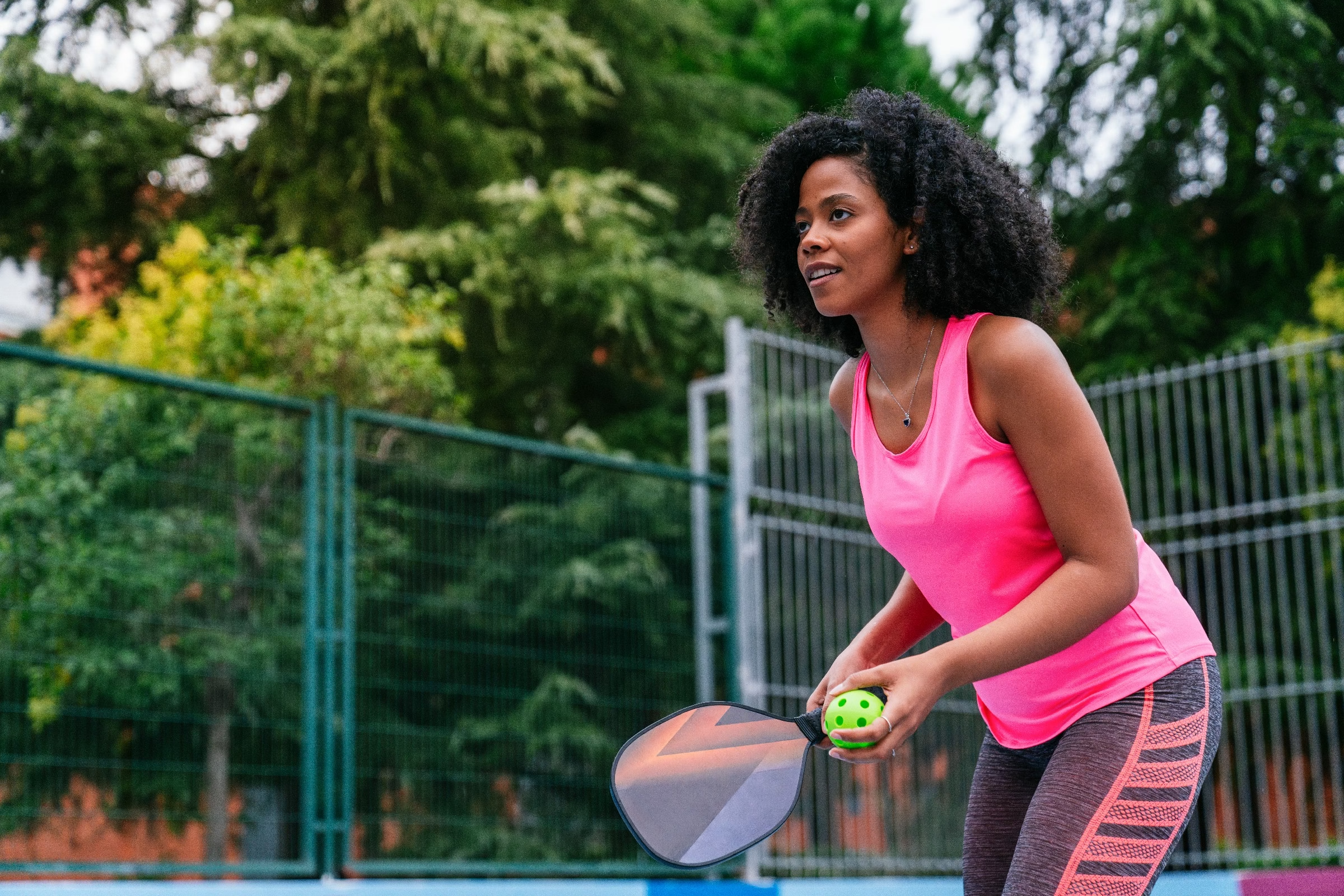Blog
a pickleball

In the sun-dappled parks and bustling community centers across the nation, a rhythmic blend of laughter, strategy, and the unmistakable sound of paddles meeting plastic has become the soundtrack of a burgeoning phenomenon: pickleball. This engaging racquet sport, which melds elements of tennis, badminton, and table tennis, has rapidly captivated players of all ages, becoming a beloved staple in the landscape of recreational activities. As its popularity surges, pickleball emerges not just as a mere pastime but as a cultural movement, fostering connections, health, and a spirited community. In this article, we will delve into the origins of pickleball, explore its unique charm, and discover why this dynamic sport is more then just a game—it’s a vibrant way to connect, compete, and have fun.
Table of Contents
- The Evolution of Pickleball: From Fun to Fitness
- Understanding the Rules and scoring Mechanisms of pickleball
- Essential Gear: Choosing the Right Paddle and footwear
- Techniques for Beginners: Mastering the Basics of Pickleball
- Strategies for Competitive Play: Elevating Your Game
- Health Benefits of Playing Pickleball: A Comprehensive Overview
- Q&A
- The Way Forward
the Evolution of Pickleball: From Fun to Fitness
The journey of pickleball is a captivating tale of evolution, one that mirrors the shifting landscape of recreational activities into the realm of robust fitness. Initially crafted as a summer pastime for families in the 1960s, this sport has captured hearts across generations. Invented by Joel Pritchard, Bill Bell, and Barney McCallum, its humble beginnings featured makeshift paddles and a simple wiffle ball. Over the decades, as the game surged in popularity, so did its conversion into a disciplined sport characterized by organized clubs and competitive leagues.
Today, pickleball has transcended its roots, emerging as a preferred choice among both young athletes and seniors seeking an engaging workout. The sport’s appeal lies in its inclusive nature, making it accessible to people of all ages and skill levels. Wiht a smaller court than traditional tennis, participants can enjoy dynamic gameplay that emphasizes agility and strategy without requiring the extensive running often associated with other racquet sports. As fitness trends shift towards more social and enjoyable workouts, pickleball’s unique combination of competition and camaraderie has made it a staple in community centers and gyms across the globe.
| Key Milestones | Year |
|---|---|
| Creation of Pickleball | 1965 |
| First National Tournament | 1976 |
| Formation of USA Pickleball Association | 2005 |
| Pickleball introduced in the Olympics exhibition | 2021 |
As the game continues to expand, so do its benefits—both physical and social. Studies show that playing pickleball improves cardiovascular health, enhances coordination, and boosts mood, making it a dynamic addition to fitness routines. With the rise of online communities and social media, pickleball has also cultivated a vibrant culture, fostering connections among players that transcend geographical boundaries. This dual focus on fun and fitness showcases the resilience and adaptability of sports as they evolve to meet the needs of a changing society.
Understanding the Rules and Scoring Mechanisms of Pickleball
To grasp the essence of pickleball, it’s essential to familiarize yourself with its basic rules. The game is typically played on a rectangular court, similar in size to a badminton court, divided by a 36-inch high net. Players can engage in either singles or doubles matches, with each player or team taking turns to serve underhand. The serve must clear the non-volley zone (commonly known as the kitchen), landing in the opponent’s service box. These crucial guidelines ensure fair play and keep the game flowing.
Scoring in pickleball is unique and can be somewhat perplexing for newcomers. Only the serving team can earn points, with games played to 11, 15, or 21 points, depending on the rules specified prior to play.A player must win by at least 2 points, emphasizing that every serve can significantly impact the overall game.Here’s a simplified overview of the scoring process:
| Action | Points Awarded |
|---|---|
| Winning a rally on serve | +1 point |
| opponent faults during return | +1 Point |
| Game ends when team reaches required points | Victory! |
Another vital aspect of understanding this engaging sport is its unique fault rules. A fault occurs in several scenarios: when the ball fails to clear the net, when it lands outside the designated court area, or if a player volleys from within the non-volley zone. Each fault not only gives the opposing team the opportunity to earn points but can also result in losing the serve. Players must remain acutely aware of their positions and movements on the court to avoid these costly mistakes and maintain the integrity of the game.
Essential Gear: Choosing the Right paddle and footwear
When it comes to enjoying a game of pickleball, selecting the right paddle is paramount. Paddles come in various materials, including wood, composite, and graphite, each offering distinct advantages. Wood paddles are typically heavier, making them great for beginners who seek durability and value. Composite paddles, on the other hand, offer a balanced feel with a large sweet spot, ideal for players looking to improve their skills. Graphite paddles are lightweight and favored by competitive players for their control and precision.
Before diving into the selection process, consider the paddle’s weight and grip size. Paddles range from around 6 to 14 ounces. Lighter paddles enhance maneuverability, allowing for faster reactions, while heavier paddles can provide power for strong hits. Additionally,grip size is crucial for comfort and control; an improper fit can lead to strain or decreased performance. Reference the table below for a speedy guide on grip sizes:
| Grip Size | Hand Size |
|---|---|
| Small | 5″ – 6″ (13 – 15 cm) |
| Medium | 6″ – 7″ (15 – 18 cm) |
| Large | 7″ and above (18 cm+) |
Equally crucial is choosing the right footwear to enhance your performance and prevent injuries. Opt for athletic shoes specifically designed for court sports. These shoes provide necessary traction, support, and cushioning tailored for quick lateral movements, reducing the risk of ankle twists. Look for features such as a non-marking sole and ample support around the arch to aid in stability and comfort during gameplay. Additionally, consider the fit of the shoe—leave about a thumb’s width between your longest toe and the end of the shoe to ensure proper spacing for movement.
Techniques for Beginners: Mastering the Basics of Pickleball
When starting out in pickleball, mastering the fundamental skills is crucial for building confidence and improving gameplay. Focus on the following key techniques to set a solid foundation:
- Stance and Grip: Ensure you have a balanced stance with feet shoulder-width apart. Experiment with different grips to find what feels pleasant—either the continental grip or the eastern grip are great starting points.
- Serving Technique: A successful serve sets the tone for the point. Practice your underhand serve by keeping it low and aiming for the back corners of the service box.
- Shot Selection: Understanding when to use different shots—like forehands, backhands, and volleys—can greatly enhance your game.Focus on placing your shots strategically rather than hitting them hard.
Footwork is another essential element of pickleball that beginners should prioritize. Good positioning not only helps in reaching the ball but also enables better shot execution. Implement these strategies:
- Small Steps: use quick, small steps to move around the court instead of large strides, which can make you unstable.
- Side-to-Side Movement: Practice lateral movements to improve your ability to cover the court efficiently.
- Engaging the Core: Utilize your core muscles to aid balance and stability, especially during shots.
Lastly, focus on mental strategies that can improve your overall gameplay. Developing a positive mindset can make a significant difference:
| Mental Techniques | Description |
|---|---|
| Visualization | Picture yourself performing successful plays to boost confidence. |
| Stay Present | Focus on each point rather than dwelling on past mistakes. |
| Set Goals | Establish short-term goals for enhancement, like mastering a specific shot. |
Strategies for Competitive Play: Elevating Your Game
To thrive in competitive play, it is essential to hone your skills through a combination of practice, strategy, and mental resilience. focus on developing a strong foundation in the fundamentals of pickleball, such as your grip, stance, and positioning. Spend time mastering key techniques like the serve,return,and volley,which can all be game-changers. Pair your technical proficiency with situational awareness,allowing you to anticipate your opponent’s moves and respond effectively.
Another critical aspect of elevating your game is understanding the dynamics of teamwork and communication, especially in doubles. Establish a clear strategy with your partner that plays to both individuals’ strengths. Consider employing the following strategies during matches:
- Positioning: Maintain optimal court positioning to cover gaps and capitalize on openings.
- shot Selection: Choose shots that exploit your opponents’ weaknesses while minimizing risk.
- Non-Verbal Cues: Use hand signals or eye contact to communicate plays effectively without alerting your opponents.
In addition to tactical improvements, it’s crucial to cultivate a competitive mindset. Focus on resilience and adaptability through rigorous mental training, which can include visualization techniques and mindfulness exercises. Keeping track of your performance metrics can also provide insights into areas for further improvement. Consider the following table to track your progress effectively:
| Date | Match Type | Wins | Losses | Key Learning |
|---|---|---|---|---|
| 2023-10-01 | Singles | 3 | 1 | Improve shot placement |
| 2023-10-08 | Doubles | 2 | 2 | Better communication |
| 2023-10-15 | Mixed | 4 | 0 | Utilize lobs more effectively |
Health Benefits of Playing Pickleball: A Comprehensive Overview
Engaging in pickleball offers a plethora of health benefits that can enhance both physical and mental well-being. The fast-paced nature of the game promotes cardiovascular health by increasing heart rate and improving circulation.Regular players frequently enough experience improved endurance, which translates into better overall fitness levels.Additionally, due to its nature as a low-impact sport, pickleball is easier on the joints compared to many other racquet sports, making it accessible for players of all ages.
Incorporating pickleball into your routine can also lead to enhanced muscle strength and versatility. The game requires rapid movements, which engage various muscle groups, particularly in the legs, core, and arms. As players dart around the court, they not only build strength but also improve their coordination and balance. This can be especially beneficial for older adults, as better balance reduces the risk of falls and associated injuries.
| Health benefit | Description |
|---|---|
| Cardiovascular Fitness | Enhances heart health and improves endurance. |
| Muscle Strength | Engages multiple muscle groups, building strength. |
| Flexibility & Balance | Improves coordination and reduces fall risk. |
| Mental Well-being | Boosts mood and reduces stress through social interaction. |
Beyond physical benefits, playing pickleball can significantly elevate mental health. The sport fosters social connections, creating a sense of community among players. Engaging in pleasant competition can boost self-esteem and provide an outlet for stress, contributing to improved mood and mental clarity. Furthermore, the strategic nature of the game requires focus and quick thinking, which keeps the mind sharp and engaged.
Q&A
Q&A: All About Pickleball
Q1: What exactly is pickleball?
A1: Pickleball is a paddle sport that combines elements from tennis, badminton, and table tennis. It is indeed played on a court that is smaller than a tennis court, with a lower net, and players use solid paddles to hit a lightweight plastic ball with holes. The game can be played in singles or doubles format.
Q2: How did pickleball get its name?
A2: The origins of the name “pickleball” are a bit whimsical. The most common story attributes it to the family dog of one of the sport’s inventors, who was named Pickles. However, some sources suggest it might also refer to the “pickle boat” in crew, which is made up of leftover oarsmen from other boats. Regardless, the name has certainly stuck!
Q3: Why has pickleball become so popular?
A3: The popularity of pickleball has surged due to its accessibility. It’s easy to learn, requires less physical strain than some other racquet sports, and can be enjoyed by a wide range of ages and skill levels.Its social aspects also make it appealing; many play in community centers, clubs, and even backyards, fostering a sense of camaraderie.
Q4: what are the basic rules of pickleball?
A4: The basic rules of pickleball involve serving the ball diagonally across a 20-foot wide court, with the goal of keeping the ball in bounds. Each side can only strike the ball once before it must go over the net, and the ball must clear a 7-foot non-volley zone near the net called the “kitchen.” Points are scored only by the serving team, typically played to 11, 15, or 21 points, winning by a margin of two.
Q5: Does pickleball require specific equipment?
A5: Yes, the game requires a few specific pieces of equipment. players need a paddle,which is typically made of wood or composite materials,and a pickleball—a lightweight plastic ball with holes. Courts can be found at many parks and recreational centers, or you can set up a makeshift court at home.
Q6: Is pickleball a good form of exercise?
A6: Absolutely! Pickleball provides an excellent cardiovascular workout while improving hand-eye coordination and agility. The fast-paced nature of the game engages various muscle groups, making it a fun and effective way to stay active. Plus, the social interaction can enhance the overall enjoyment and adherence to a fitness routine.
Q7: Can anyone play pickleball?
A7: Yes! Pickleball caters to players of all ages and skill levels. Its adaptability allows individuals to play at a leisurely pace or engage in more competitive matches. many communities offer introductory classes, ensuring that newcomers can learn the rules and techniques in a supportive environment.
Q8: Where can I play pickleball?
A8: Many local parks, community centers, and gyms have dedicated pickleball courts. Additionally,many towns are increasingly building facilities specifically for pickleball due to its rising popularity. Online resources and local clubs can also provide information on where to play in your area.
Q9: How can someone get started with pickleball?
A9: To get started, find a court near you and grab a paddle and a ball. Many communities offer beginner sessions or clinics where you can learn the rules and gameplay essentials. Joining a local pickleball group or community can also enhance your experience, providing opportunities for practice and play with others.
Q10: What’s next for the future of pickleball?
A10: The future of pickleball looks shining, with growing interest nationally and internationally. Organizations are working to promote the sport through tournaments, youth programs, and even aspirations for it to be included in the Olympics. As more players discover the joys of the game, expect the pickleball community to continue to expand and evolve!
—
With its unique blend of fun, fitness, and friendly competition, pickleball is proving to be a game for everyone! Whether you’re a seasoned athlete or a curious beginner, there’s a place for you in the world of pickleball. Grab your paddle and join in the fun!
The Way Forward
As we conclude our exploration of the vibrant world of pickleball, it’s clear that this engaging sport has transcended its humble origins to become a beloved pastime for players of all ages. With its unique blend of tennis, badminton, and ping-pong, pickleball not only provides a fantastic workout but also fosters a sense of community and camaraderie among its enthusiasts. Whether your wielding a paddle for the first time or strategizing your next tournament, the joy of pickleball is accessible to everyone. As you step onto the court,remember: it’s not just about the competition—it’s about connection,laughter,and the sheer pleasure of play. So grab a paddle, gather some friends, and dive headfirst into the delightful dynamics of pickleball. The court awaits you!

